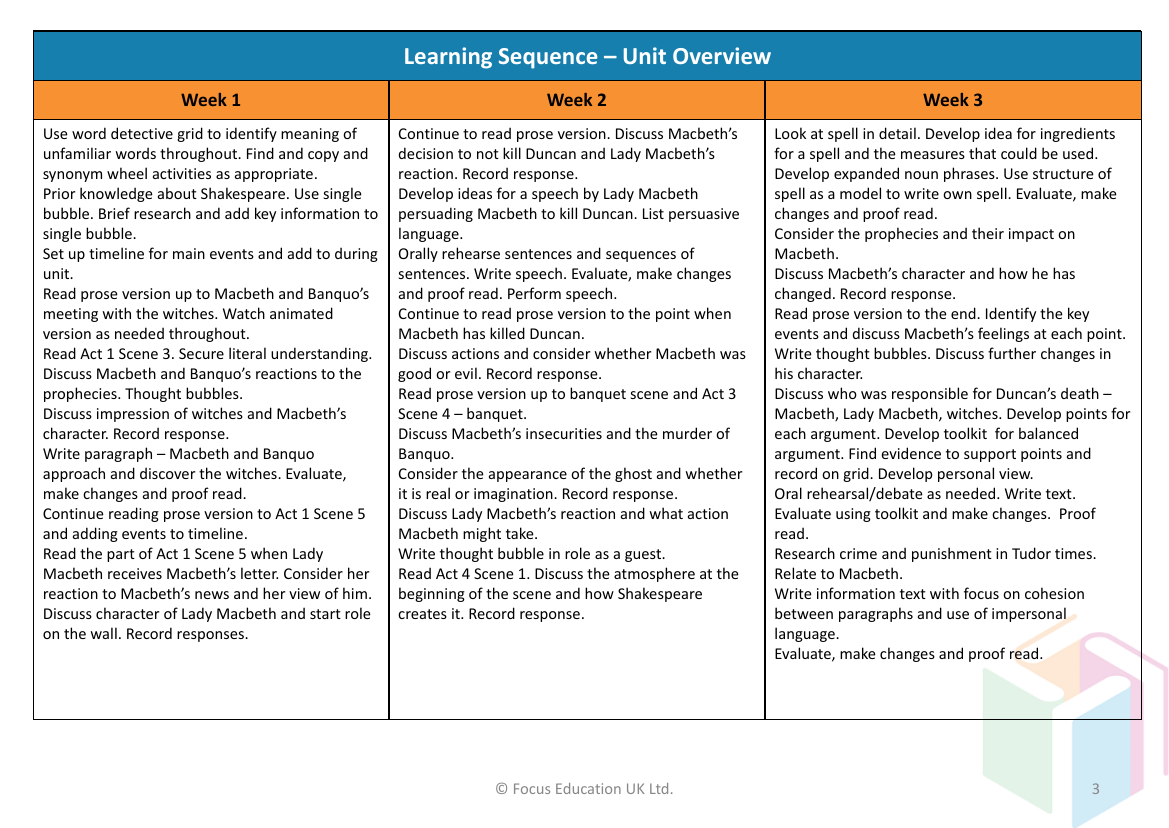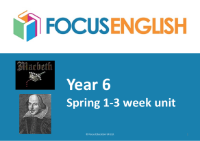Macbeth - Learning Sequence

English Resource Description
The learning sequence for studying 'Macbeth' spans several weeks and is designed to deepen students' understanding of Shakespeare's work through a variety of engaging activities. In the initial phase, students employ a 'word detective grid' to decipher the meanings of unfamiliar terms, enhancing their vocabulary with activities such as 'find and copy' and 'synonym wheel'. They build upon their prior knowledge of Shakespeare and conduct brief research to contribute to a collaborative 'single bubble' of key information. A timeline of the main events in 'Macbeth' is set up and added to throughout the unit. Students read a prose version of the play up to Macbeth's encounter with the witches and supplement their understanding with an animated version if necessary. They explore Act 1 Scene 3, focusing on literal comprehension and the characters' reactions to the witches' prophecies through discussion and 'thought bubbles'.
As the students progress, they continue to read the prose adaptation, delving into Lady Macbeth's character and her reaction to Macbeth's news in Act 1 Scene 5. They engage in role-play activities and record their responses to deepen their character analysis. The sequence includes creative writing tasks, such as drafting a persuasive speech by Lady Macbeth and writing in role as a guest at the banquet scene. Students examine the pivotal moments in the play, discussing Macbeth's moral ambiguity and the supernatural elements. The unit also involves a detailed look at the witches' spell, encouraging students to craft their own spells using expanded noun phrases and evaluate their work. Further activities include debating who is responsible for Duncan's death, researching Tudor crime and punishment, and writing an information text with a focus on cohesion and impersonal language. Each task is followed by evaluation and proofreading to refine students' work and critical thinking skills.


